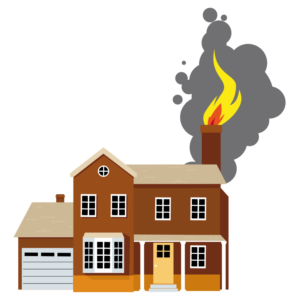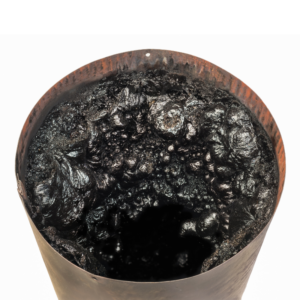It’s officially the winter season, and here in York County, we still have a lot of cold and snowy weather ahead of us. Which means, your fireplace is likely to see quite a bit of use in the weeks to come! Because of this, we want you to be as prepared as possible to run your system safely and efficiently.
And in order to do this, it’s important to be aware of chimney fires, creosote, and the risks involved with them.
What Is a Chimney Fire?
A chimney fire is what happens when flames work their way up your chimney. This results in damage throughout the system, and it makes your fireplace unsafe for use.
Now, many are surprised to learn that chimney fires are not typically loud, big events. They actually tend to move quite slowly and quietly, meaning you could easily experience one without even knowing it! This thought is quite unsettling, as many end up putting their system to use, not knowing they’re risking carbon monoxide exposure, smoke inhalation, and even house fires by doing so.
The best way to avoid a chimney fire is to keep your creosote levels under control by investing in regular chimney sweepings. Get the inside scoop on creosote (and how to avoid it) below.
What Is Creosote?
 Creosote is one of the leading causes of chimney fires
Creosote is one of the leading causes of chimney fires
It forms from the byproducts of your fires (like tar fog, smoke, water vapor, hydrocarbon, and other gases and particles), so it’s very flammable in nature. And if too much accumulates, the flames and sparks from your firebox will be a lot more likely to spread throughout your system.
Your masonry (along with various other chimney components, like the cap, damper, flashing, liner, and more) can’t withstand this direct contact with your fires. In fact, chimney fires are known for burning at around 2000 degrees Farenheit, which means your mortar joints will melt, your metal components will warp and become discolored, and even your roofing materials may suffer.
What does creosote look like? Well, it’s black or dark brown in color, and it can come in a few forms. The easiest to remove is light, flaky, and it doesn’t adhere to your walls quite so firmly. Other times, it may be more sticky and tar-like, which is harder to remove, or in the worst case scenario it will be hard, glazed, and glossy. This is known as level 3 creosote, and removing it requires special tools and chemicals.
How Can I Avoid Creosote?
Once people learn what creosote is exactly, what they want to know next is how it forms and if there’s any way to stop it from occurring. Well, creosote forms when the byproducts we touched on earlier move to the top of your flue where things are cooler in temperature. As these fumes cool down, condensation forms and, as a result, a sticky residue (creosote) clings to the inner walls of your system.
The bad news is that there is no way to keep it from forming. If you burn wood, creosote is simply a result of doing that and something you’ll have to deal with.
But there’s good news, too, and that is that you can slow the rate at which it accumulates by following these guidelines:
- Burn ONLY seasoned wood: This means no trash in your fireplace and no fresh wood either. If seasoning your own wood, be sure to dry it out (off the ground and preferably in a shed with a solid roof and open sides) for at least six months. If purchasing wood, look for shorter pieces that are lightweight, dark/split at the end, and make a hollow “clunk” when smacked together.
- Burn hot, quick fires: We get the appeal of a slow, smoldering burn, but during these the combustion byproducts don’t burn off as easily. The hotter the fire, the cleaner it burns, and the less creosote you’ll end up with.
- Avoid poor draft and airflow: The better your draft, the quicker smoke and gases will move through your chimney. The more they linger, the higher the likelihood of creosote forming, so make sure nothing is restricting airflow.
- Don’t overload the firebox: Piling wood in the firebox in an attempt to get a longer burn actually results in higher levels of creosote. We get not wanting to get up and add logs throughout the evening, but taking these few extra steps will be well worth it when it comes to minimizing creosote deposits.
- Don’t use artificial logs: Artificial logs give off a lot more harmful byproducts than real wood, so avoid using them as much as you can.
- Warm up your flue: As we’ve mentioned, colder flue temps result in higher levels of creosote, so try warming your flue before lighting a fire, especially if your chimney is on the outside of the house. This can be done by lighting a rolled up newspaper, then holding it inside of your flue for a bit. This also helps to reverse airflow, so you don’t end up with a smoky living space.
- Upgrade to a top-sealing damper: These are known for their tight seal and, because they’re installed at the top of your flue instead of the middle or bottom, your chimney will stay warmer when not in use. Not only will this help reduce creosote, but it also helps reduce cold downdrafts entering your living space.
Work With Us Today
The best way to stay safer when operating your fireplace is to trust in our crew for it all! Reach out to our CSIA-certified team of experts today. We’d love to hear from you soon!

Recent Comments